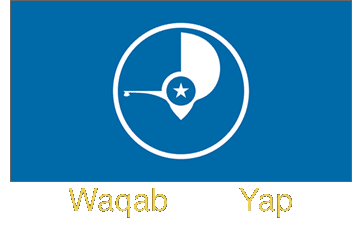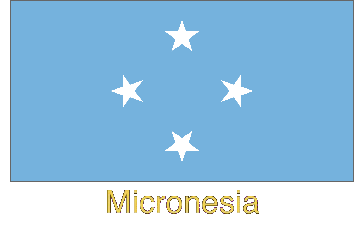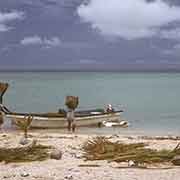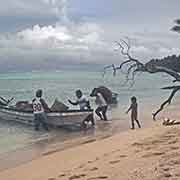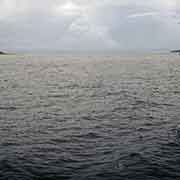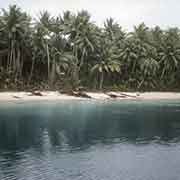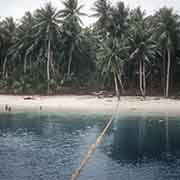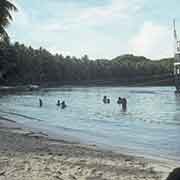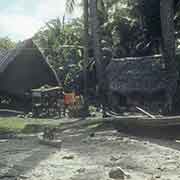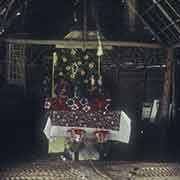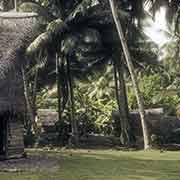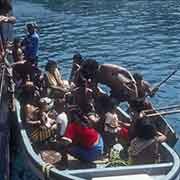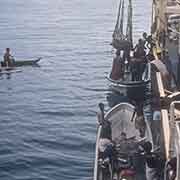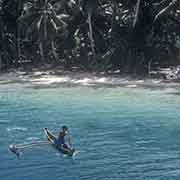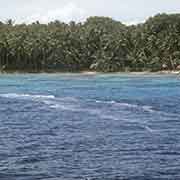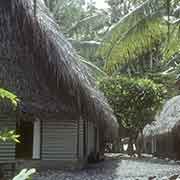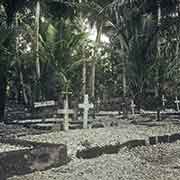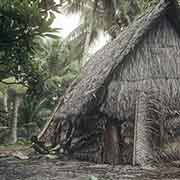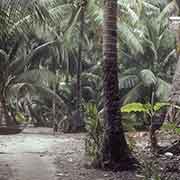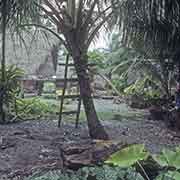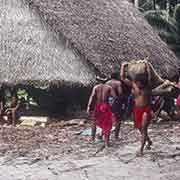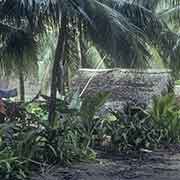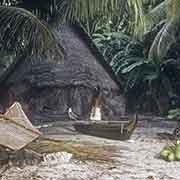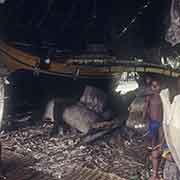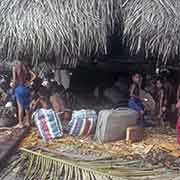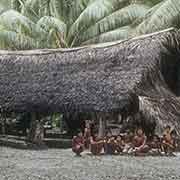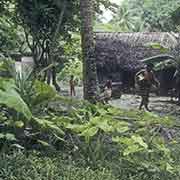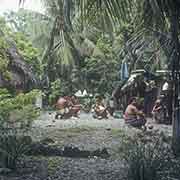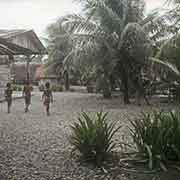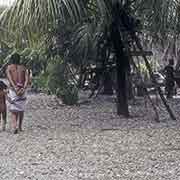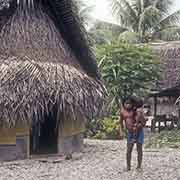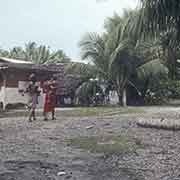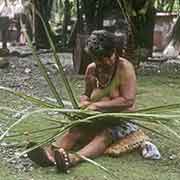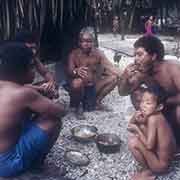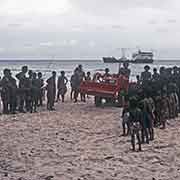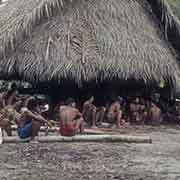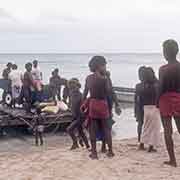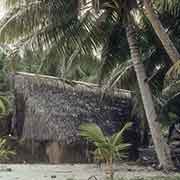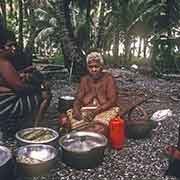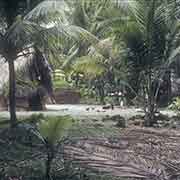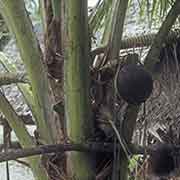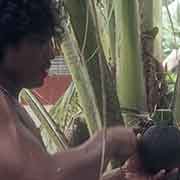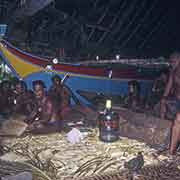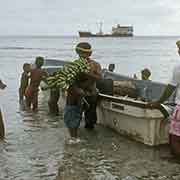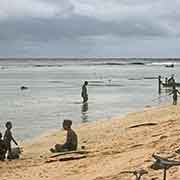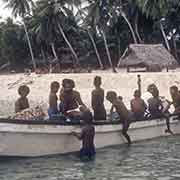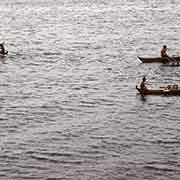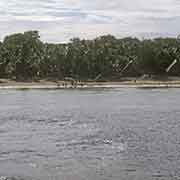Photos of Outer Islands of Yap State, Micronesia
Yap State Outer Islands: Olimarao, Elato, Lamotrek and Satawal
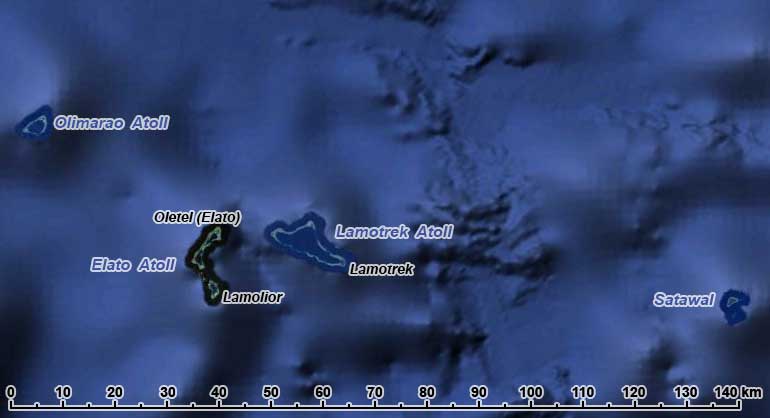
The four easternmost islands of Yap State are closer to Chuuk Lagoon than to Yap, but the supply ships only serve those islands from the States where they are based, four to six times a year. Satawal is over 1000 kilometres from Yap, but only half of that from Chuuk Lagoon. From west to east the islands are Olimarao, Elato, Lamotrek and Satawal.
you may then send it as a postcard if you wish.
Olimarao Atoll has no permanent habitation but is part of the Olimarao Conservation Area, where the breeding places of sea turtles, coconut crabs and sea birds are protected. Islanders visit it from Elato, 36 kilometres to the southeast, from where it is administered. They produce copra here from the coconuts.
Elato is actually two separate atolls: the northern part is the largest with the island of Elato (or Oletel) at its north point. About 14 kilometres south from there is Lamolior with its little lagoon. Unique is that the supply ship can sail straight into the northern lagoon and be moored with a cable to a coconut palm on Elato island. Fewer than 100 people live here.
Lamotrek is a coral atoll of three islands, about 11 kilometres east of Elato. The population of the island of Lamotrek, on the east side of the atoll, is around 350 but is reduced to maybe 300 when students leave to attend boarding schools on Woleai and Ulithi.
Satawal, 72 kilometres east of Lamotrek, is a small coral island, 2 kilometres at its widest point, without a lagoon. It is the easternmost island of Yap State. The population is about 500, and the local language is Satawalese, related to that of Woleai. The island is famous for preserving the traditional way of navigation, without using instruments. It is the home island of Mau Piailug (1932-2010), who, as a child, had been chosen by his grandfather to become a navigator. He learned the essential navigational clues regarding the “stars, swells, and birds” and as a young man, he was initiated in a sacred “pwo” ceremony in which students become master navigators.
When he was in his early forties, Mau became concerned the skill might die with him as he had not succeeded in making the younger generation on Satawal interested in it. In 1975 he went to Hawaii and trained a Native Hawaiian navigator, Nainoa Thompson, and the following year he navigated a large double-hulled canoe, the Hōkūle ‘a, from Hawaii to Tahiti. Mau kept training Nainoa and in 1980 Nainoa, with Mau as a passenger, navigated the Hōkūle ‘a from Hawaii to Tahiti and back, a feat that had not been done for 500 years. This created enormous interest, and it reached a climax in 2007 when Mau presided over the first “pwo” ceremony for 56 years on Satawal. Five Native Hawaiians and eleven others were inducted as master navigators, including Nainoa Thompson and Mau’s son, Sesario Sewralur. The success of Mau Piailug has gain sparked cultural pride and interest in the old way of navigation among Micronesian and Polynesian peoples of the Pacific.
